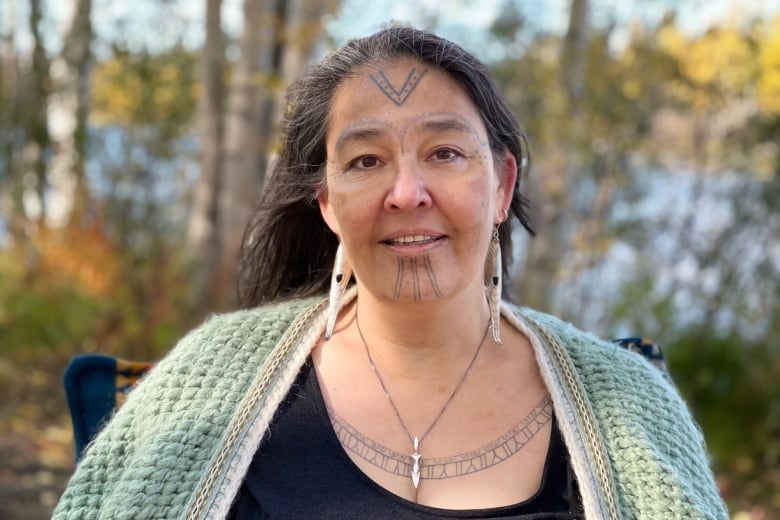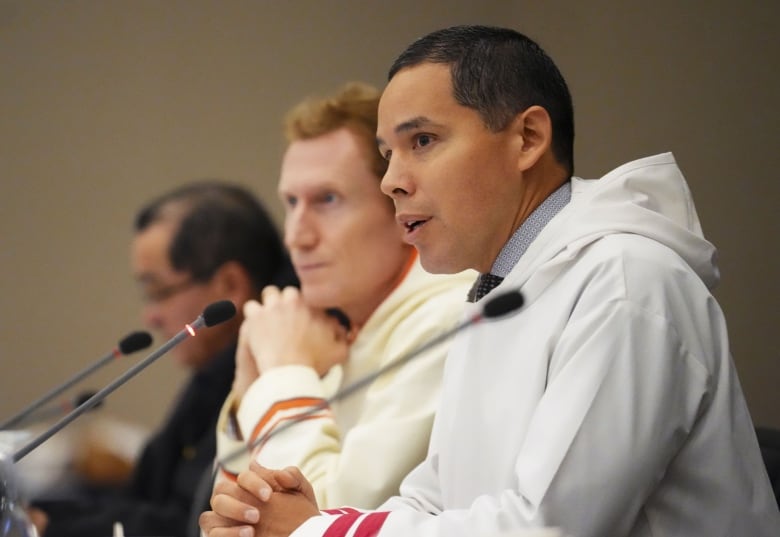National Inuit organization, RCMP start work to prevent human trafficking | CBC News
The national organization representing Inuit says it's ready to start working with the RCMP to protect Inuit from human trafficking networks — especially in southern communities where they are more vulnerable.
Natan Obed, president of the Inuit Tapiriit Kanatami (ITK), said something must be done about Inuit who go south for services — such as health care and education — and become targets for human traffickers.
Obed said the problem is worst in cities like Montreal and Ottawa, places that have seen a number of high-profile trafficking cases that ended in the deaths of Inuit women.
“This is something that is a very Inuit specific consideration and concern,” Obed said.
“We are fortunate that we are going to have the resources to bring together all of the actors within a space and try to make a difference on the ground.”
Obed said he hopes to start that work Tuesday in Ottawa at a human trafficking forum with detachment-level RCMP officers and victim services organizations. It's the first such forum to be co-hosted by the ITK and the RCMP.
The stated goal of the forum is to understand the problem better and create mechanisms to stop it.
More than 60 per cent of Indigenous women have experienced either physical or sexual assault in their lifetimes, according to Statistics Canada. About one-third of non-Indigenous women have experienced the same level of violence.
StatsCanada says that almost 40 per cent of Inuit women have reported experiencing physical assault, while 28 per cent reported sexual assaults.
A system designed to send Inuit south
It's not just the policing services that need to do more to prevent human trafficking, said Gerri Sharpe, president of Pauktuutit Inuit Women of Canada.
One solution, she said, would be to address the widespread lack of basic health services like midwifery in Inuit Nunangat, the Inuit homeland consisting of four northern regions.
The system seems designed to send women south for pre- and post-natal care, she said, and most Inuit women have to leave their communities to have a baby.
“When Inuit women move south, they are at risk,” Sharpe said.
“This is what makes missing and murdered Indigenous women and girls so susceptible.”

Often, she said, pregnant Inuit women who go south are gone for a month before their actual due date arrives. Up until recently, she said, they were not entitled to subsidized travel costs for a companion or escort.
In 2017, Health Canada announced it would start subsidizing travel costs to allow Indigenous women leaving their communities in order to give birth to bring a family member or friend with them.
Tackling human trafficking has been a priority for Pauktuutit ever since it learned in 2012 of more than 40 cases of Inuit women being trafficked through Ottawa alone.
One-third of Inuit live outside of the Inuit Nunangat.
Inuit women who go south often don't know where to go for help or resources such as housing, or even how to get back home, Sharpe said.
“They are more vulnerable,” she said. “They feel more alone. That causes that sense of spiral.”
Pauktuutit is sending representatives to the ITK and RCMP forum, which is closed to media.
“The RCMP welcomes any role that it could potentially play in this matter, including through connecting the ITK with divisional-level contacts and tapping into the experiences of experts, retired Indigenous members and people affected by this issue,” said outgoing RCMP Commissioner Brenda Lucki.
Improving relations with the RCMP
Pauktuutit Inuit Women of Canada and ITK are also both working separately with the RCMP to improve services for Inuit.
Sharpe said Mounties need a better understanding of Inuit culture, including the use of body language. She said that among Inuit, for example, something as subtle as widening the eyes can be a sign someone has answered your question.
The ITK signed a memorandum of understanding with the RCMP last year to work together on key priorities, including protecting Indigenous women and girls from disappearing or being murdered.
Obed said the RCMP has had a very difficult relationship with Inuit, but individual officers and detachments have tried hard to work with Inuit communities.
“The RCMP is really trying to change,” Obed said.
“We're at that point now of building those essential foundational building blocks of a good relationship.”

The ITK is working with the RCMP to create cross-cultural training to help Mounties understand Inuit and their culture.
The ITK and Pauktuutit are also working with each other to create a mechanism to report racist behaviour within the RCMP.
Lucki is the first commissioner to hold bi-annual meetings with Inuit leaders.
She said the Mounties are looking to address systemic barriers in Mountie training by, among other things, weeding out biases in the entrance exam.
The goal is to see a significant increase in the number of Indigenous recruits at the RCMP's training academy by the end of 2023, she said.
 ABOUT PBJ LEARNING
ABOUT PBJ LEARNING
PBJ Learning is a leading provider of online human trafficking training, focusing on awareness and prevention education. Their interactive Human Trafficking Essentials online course is used worldwide to educate professionals and individuals how to recognize human trafficking and how to respond to potential victims. Learn on any web browser (even your mobile phone) at any time.
More stories like this can be found in your PBJ Learning Knowledge Vault.
This “Eyes on Trafficking” story is reprinted from its original online location.
ABOUT PBJ LEARNING
PBJ Learning is a leading provider of online human trafficking training, focusing on awareness and prevention education. Their interactive Human Trafficking Essentials online course is used worldwide to educate professionals and individuals how to recognize human trafficking and how to respond to potential victims. Learn on any web browser (even your mobile phone) at any time.
More stories like this can be found in your PBJ Learning Knowledge Vault.
